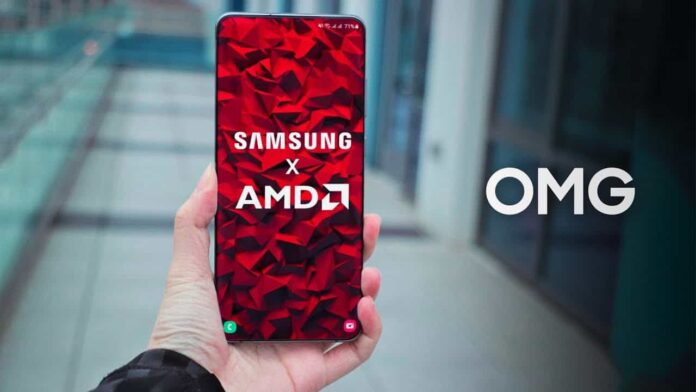Samsung Electronics has revealed that it has extended its multi-year agreement with US semiconductor maker AMD to incorporate AMD Radeon graphics solutions into Samsung Exynos chipsets. This extension allows the South Korean company to deliver new mobile devices to the consumer market, including smartphones that offer mobile gaming experiences with “console-level graphics quality” and energy consumption optimization, according to a press release from Samsung.
Samsung has collaborated with AMD to incorporate ray tracing (RT) functionality in its mobile processors. The RT feature generates realistic lighting effects in graphically rendered scenes by simulating the movement of light in the real world. It promises to provide consumers with immersive visuals during mobile gaming sessions, albeit only in games that support AMD’s ray tracing.
“Building on our technological know-how in designing ultra-low-power solutions, we will continue to lead innovation in the mobile graphics space,” said Executive Vice President of Application Processor (AP) Development Seogjun Lee at Samsung Electronics.
“We are very pleased that Samsung has chosen multiple generations of our leading high-performance Radeon graphics to evolve the next generation of Samsung Exynos solutions,” said David Wang, senior vice president of AMD’s Radeon Technologies Group, adding that the signature of the extension of the partnership with Samsung Electronics testifies “our commitment to offering the best possible experiences to mobile users”.
Samsung and AMD began collaborating in 2019 when the South Korean company and the US multinational signed an agreement regarding the licensing of the AMD RDNA graphics architecture. In early 2022, Samsung Electronics introduced its Exynos 2200 mobile chipset with Xclipse GPU, a hybrid graphics processor based on AMD RDNA 2 architecture and with variable rate shading (VRS) and ray tracing technologies ). Both of these latest technologies were previously only available on PCs, laptops, and gaming consoles.
Samsung usually uses its own Samsung Exynos chipsets and Qualcomm Snapdragon mobile platforms in its smartphones and tablets. AMD technologies licensed to the South Korean company can only be found in some Exynos chipsets since Qualcomm uses proprietary technologies in its SoCs. Samsung’s Galaxy S smartphone line has been offered for several years with models powered by Qualcomm or Exynos chips depending on the target market, respectively the United States and the rest of the world. This was the case until the models of the Galaxy S22 series (from 2022), with those destined for the US market powered by the Exynos 2200 chipset while those destined for the rest of the world (including Italy) powered by the Qualcomm Snapdragon 8 Gen1 chipset. This year, the Galaxy S23 series is powered by the same “ Qualcomm Snapdragon 8 Gen2 for Galaxy ” octa-core chipset worldwide, a variant exclusive to these models of the Qualcomm Snapdragon 8 Gen2 clocked at up to 3.36GHz.
We just have to wait to find out what will be the next Exynos chipset powered by AMD technologies that Samsung will use to power new smartphone and tablet models.

